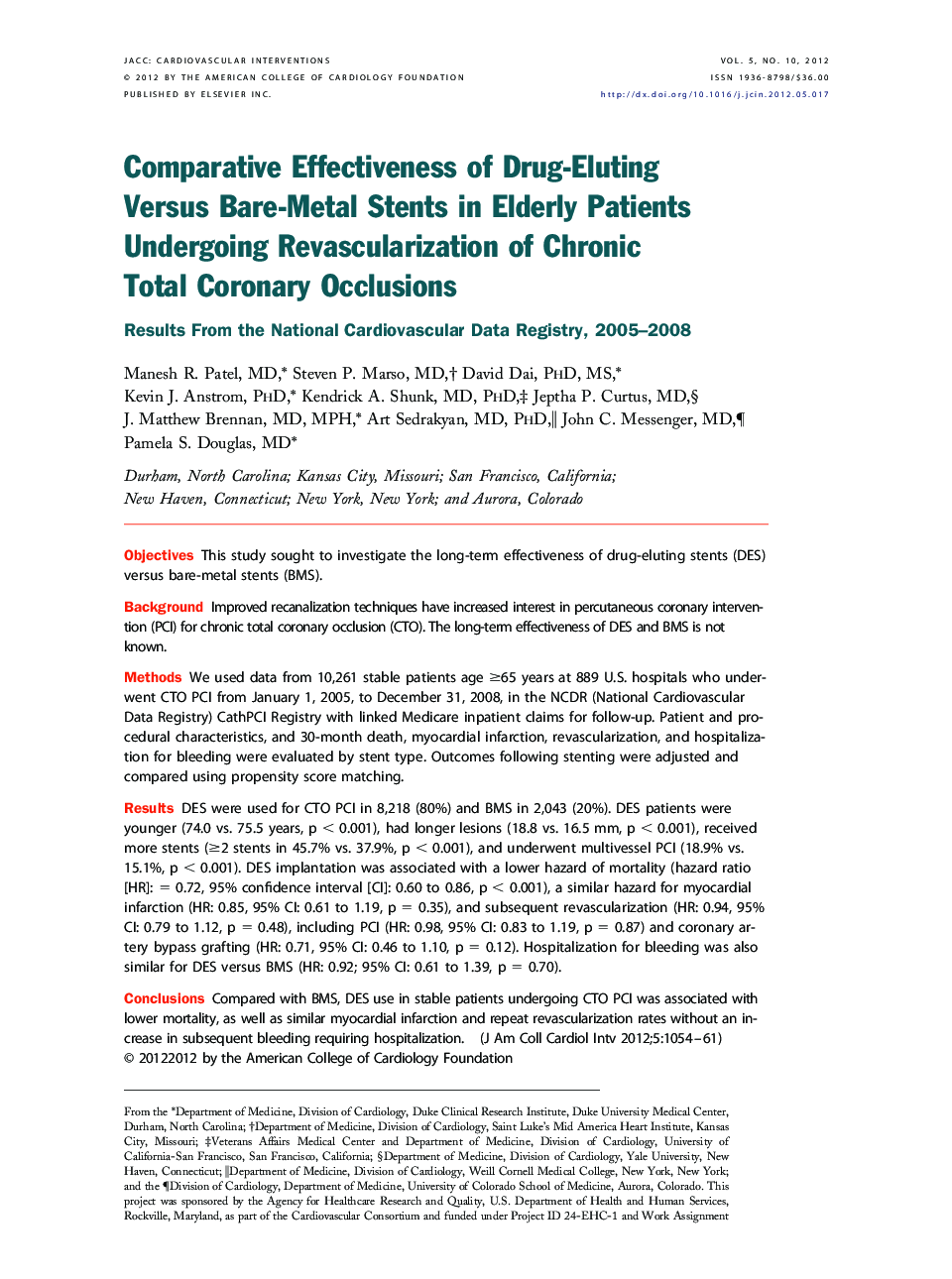| کد مقاله | کد نشریه | سال انتشار | مقاله انگلیسی | نسخه تمام متن |
|---|---|---|---|---|
| 2940727 | 1177040 | 2012 | 8 صفحه PDF | دانلود رایگان |

ObjectivesThis study sought to investigate the long-term effectiveness of drug-eluting stents (DES) versus bare-metal stents (BMS).BackgroundImproved recanalization techniques have increased interest in percutaneous coronary intervention (PCI) for chronic total coronary occlusion (CTO). The long-term effectiveness of DES and BMS is not known.MethodsWe used data from 10,261 stable patients age ≥65 years at 889 U.S. hospitals who underwent CTO PCI from January 1, 2005, to December 31, 2008, in the NCDR (National Cardiovascular Data Registry) CathPCI Registry with linked Medicare inpatient claims for follow-up. Patient and procedural characteristics, and 30-month death, myocardial infarction, revascularization, and hospitalization for bleeding were evaluated by stent type. Outcomes following stenting were adjusted and compared using propensity score matching.ResultsDES were used for CTO PCI in 8,218 (80%) and BMS in 2,043 (20%). DES patients were younger (74.0 vs. 75.5 years, p < 0.001), had longer lesions (18.8 vs. 16.5 mm, p < 0.001), received more stents (≥2 stents in 45.7% vs. 37.9%, p < 0.001), and underwent multivessel PCI (18.9% vs. 15.1%, p < 0.001). DES implantation was associated with a lower hazard of mortality (hazard ratio [HR]: = 0.72, 95% confidence interval [CI]: 0.60 to 0.86, p < 0.001), a similar hazard for myocardial infarction (HR: 0.85, 95% CI: 0.61 to 1.19, p = 0.35), and subsequent revascularization (HR: 0.94, 95% CI: 0.79 to 1.12, p = 0.48), including PCI (HR: 0.98, 95% CI: 0.83 to 1.19, p = 0.87) and coronary artery bypass grafting (HR: 0.71, 95% CI: 0.46 to 1.10, p = 0.12). Hospitalization for bleeding was also similar for DES versus BMS (HR: 0.92; 95% CI: 0.61 to 1.39, p = 0.70).ConclusionsCompared with BMS, DES use in stable patients undergoing CTO PCI was associated with lower mortality, as well as similar myocardial infarction and repeat revascularization rates without an increase in subsequent bleeding requiring hospitalization.
Journal: JACC: Cardiovascular Interventions - Volume 5, Issue 10, October 2012, Pages 1054–1061